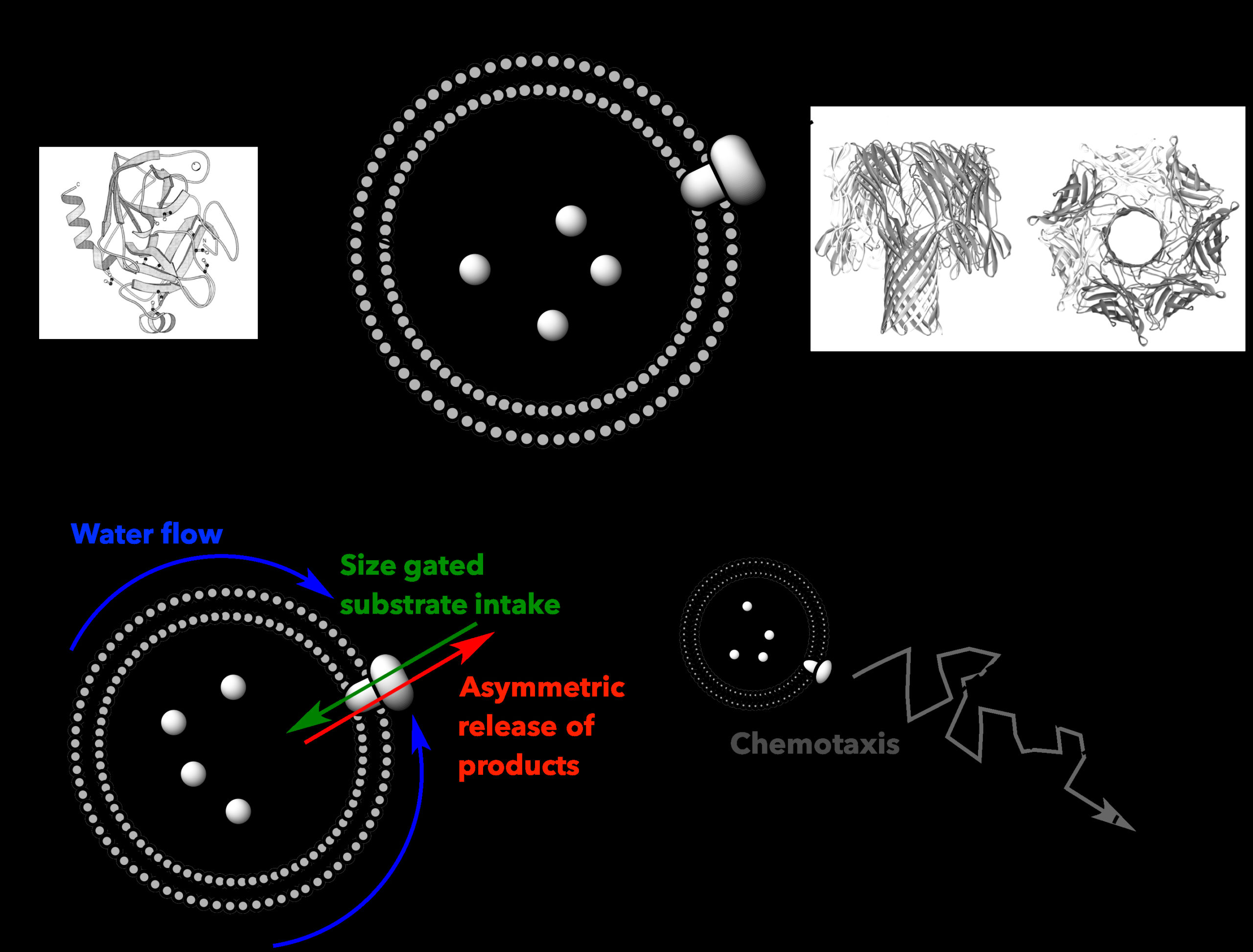Directional locomotion or taxis is possibly one of the most important evolutionary milestones, as it has enabled many living organisms to outperform their non-motile competitors Nunes-Alves (2016). In particular, chemotaxis (i.e. the movement of organisms either toward or away from specific chemicals) is the most common strategy adopted by many unicellular organisms to gather nutrients, escape toxins and help coordinate formation of colonies. Recently, we demonstrated that chemotaxis can be achieved by creating a nanoscopic vesicle loaded with enzymes, whose membrane have an asymmetric distribution of permeable domains Joseph et al. (2017).
When placed in the presence of a chemical gradient that act as substrate for the enzyme, the asymmetric distribution of flow across the vesicle membrane create a biased slip velocity around the vesicles and a consequent propulsion. This, in turn, allows the vesicles to move chemotactically toward higher concentration of the substrate allowing long-ranged targeted delivery. Here, we will expand this concept using uniquely biological molecules with the final aim to demonstrate that a minimal organisation of biomolecules can create the conditions for complex behaviour such as chemotaxis. The schematics of the system are showed in figure 1 where we propose a simple vesicle formed by natural occurring phospholipids that encapsulate Wang et al. (2012), Messager et al. (2016) enzymes. This will be than placed in contact with pore forming -Hemolysin. This protein unimers assemble to form an heptameric pore with a pore-diameter of 1.5 nm Song et al. (1996). The pore is selective for the passage of any molecules with mass lower than 1kDa as well as several cations including K+ , Na+ and Ca2+. We will encapsulate proteases and use short and long sequences of amino acids as substrate/signalling molecules. The student will be trained in constructing and characterising the proposed nano-reactor as well as trained to measure anomalous diffusion using in house and commercial nanoparticle tracking systems. We expect students with strong interest in Synthetic Biology and solid calculus skills, experience in MatLab or Python packages will be advantageous, however training will be provided.
References:
Joseph, A., Contini, C., Cecchin, D., Nyberg, S., Ruiz-Perez, L., Gaitzsch, J., Fullstone, G., Tian, X., Azizi, J., Preston, J., Volpe, G. & Battaglia, G. (2017), ‘Chemotactic synthetic vesicles: Design and applications in blood-brain barrier crossing.’, Science advances 3, e1700362.
Messager, L., Burns, J. R., Kim, J., Cecchin, D., Hindley, J., Pyne, A. L. B., Gaitzsch, J., Battaglia, G. & Howorka, S. (2016), ‘Biomimetic hybrid nanocontainers with selective permeability.’, Angewandte Chemie (International ed. in English) 55, 11106–11109.
Nunes-Alves, C. (2016), ‘Bacterial evolution: How to extend your stay.’, Nature reviews. Microbiology 14, 130–131. Song, L., Hobaugh, M. R., Shustak, C., Cheley, S., Bayley, H. & Gouaux, J. E. (1996), ‘Structure of staphylococcal alpha-hemolysin, a heptameric transmembrane pore.’, Science (New York, N.Y.) 274, 1859–1866.
Wang, L., Chierico, L., Little, D., Patikarnmonthon, N., Yang, Z., Azzouz, M., Madsen, J., Armes, S. P. & Battaglia, G. (2012), ‘Encapsulation of biomacromolecules within polymersomes by electroporation.’, Angewandte Chemie (International ed. in English) 51, 11122–11125.


